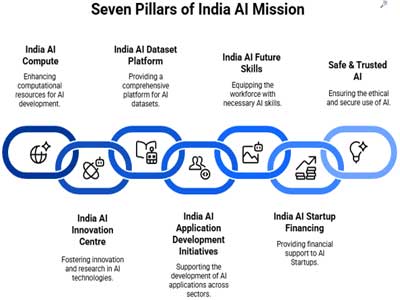{googleAds}
<div style="float:left">
<script type="text/javascript"><!--
google_ad_client = "ca-pub-3667719903968848";
/* 300*250 */
google_ad_slot = "6737196882";
google_ad_width = 300;
google_ad_height = 250;
//-->
</script>
<script type="text/javascript"
src="http://pagead2.googlesyndication.com/pagead/show_ads.js">
</script>
</div>
{/googleAds} The Walk for Yamuna was undertaken on the World Rivers Day, observed all over the world to draw attention to world's rivers facing severe and increasing threats associated with climate change, pollution, and industrial development.
An organiser of the Walk told Mediabharti Syndication Service 'world rivers day strives to increase public awareness of the importance of our waterways as well as the many threats confronting them.'
In his message Mark Angelo, Rivers Day Chair and Founder and Chair Emeritus of the Rivers Institute at the British Columbia Institute of Technology said 'Rivers are integral to all life and yet many waterways continue to be impacted by inappropriate practices and inadequate protection.'
The Yamuna in Agra is now seen posing a major threat to the historical monuments along its banks including the 17th century white marble marvel, the Taj Mahal. 'But in the past two decades all kinds of pollutants and toxics are freely flowing into the river. These, one fears could be corroding the structure below the main platform of the Taj Mahal. Half the year the river remains dry and all that flows is plain waste and sewer from upstream drains,' said organiser of the Walk, Shravan Kumar Singh.
Acharya Madhukar Chaturvedi, said 'river Yamuna was not just a water body, but a holy river of the Hindus, revered and worshipped by millions of Vaishnavs as the consort of Shri Krishna. Yamuna is a symbol of the rich traditions of the Braj area, the repository of Bhakti movement, of art, music and dance, of green foliage and fauna. But unfortunately, people all along its banks right from Haryana to Agra were doing everything to kill the river which represents a culture, a tradition and the religious belief.'
Jugal Kishore Shrotriya, a temple priest and a young green activist said 'for all practical purposes the river is dead in Agra. Only garbage, carcasses, and sewer flow. The aquatic life has been decimated. It is now unsafe to even take an 'aachman' leave alone a bath. So many plans and schemes to save the river have gone down the drains. One sees no serious efforts to revive the life line of the Taj city.'
Activists said the free flow of the river has been obstructed by a series of barrages upstream that hold up all the water. What reaches Agra is just waste and sewage. 'The Yamuna Action Plans, one and two, have made no discernible improvements in water quality. The flow is inadequate. The sewage treatment plants either do not work, or are short of resources to run round the clock,' said Surendra Sharma of the Heritage Society.
The state and central governments have made lots of promises to protesters and marchers in the past two years but so far the assurance of a minimum flow in the river has not been met.
The Yamuna river flood plains are encroached and despite clear directives of the National Green Tribunal in July, no action has been taken, says Akash Vashisht, the petitioner in the NGT.
Talking to MSS from Washington, environmental scientist Subijoy Dutta said 'we have carried out several studies and submitted proposals to both Delhi government and the state agencies in Agra. The know-how and low-cost techniques are now available, but there seems to be no seriousness or urgency anywhere. The wetland technology, the low-cost diffusers and floating aerators can be installed.'
<div style="float:left">
<script type="text/javascript"><!--
google_ad_client = "ca-pub-3667719903968848";
/* 300*250 */
google_ad_slot = "6737196882";
google_ad_width = 300;
google_ad_height = 250;
//-->
</script>
<script type="text/javascript"
src="http://pagead2.googlesyndication.com/pagead/show_ads.js">
</script>
</div>
{/googleAds} The Walk for Yamuna was undertaken on the World Rivers Day, observed all over the world to draw attention to world's rivers facing severe and increasing threats associated with climate change, pollution, and industrial development.
An organiser of the Walk told Mediabharti Syndication Service 'world rivers day strives to increase public awareness of the importance of our waterways as well as the many threats confronting them.'
In his message Mark Angelo, Rivers Day Chair and Founder and Chair Emeritus of the Rivers Institute at the British Columbia Institute of Technology said 'Rivers are integral to all life and yet many waterways continue to be impacted by inappropriate practices and inadequate protection.'
The Yamuna in Agra is now seen posing a major threat to the historical monuments along its banks including the 17th century white marble marvel, the Taj Mahal. 'But in the past two decades all kinds of pollutants and toxics are freely flowing into the river. These, one fears could be corroding the structure below the main platform of the Taj Mahal. Half the year the river remains dry and all that flows is plain waste and sewer from upstream drains,' said organiser of the Walk, Shravan Kumar Singh.
Acharya Madhukar Chaturvedi, said 'river Yamuna was not just a water body, but a holy river of the Hindus, revered and worshipped by millions of Vaishnavs as the consort of Shri Krishna. Yamuna is a symbol of the rich traditions of the Braj area, the repository of Bhakti movement, of art, music and dance, of green foliage and fauna. But unfortunately, people all along its banks right from Haryana to Agra were doing everything to kill the river which represents a culture, a tradition and the religious belief.'
Jugal Kishore Shrotriya, a temple priest and a young green activist said 'for all practical purposes the river is dead in Agra. Only garbage, carcasses, and sewer flow. The aquatic life has been decimated. It is now unsafe to even take an 'aachman' leave alone a bath. So many plans and schemes to save the river have gone down the drains. One sees no serious efforts to revive the life line of the Taj city.'
Activists said the free flow of the river has been obstructed by a series of barrages upstream that hold up all the water. What reaches Agra is just waste and sewage. 'The Yamuna Action Plans, one and two, have made no discernible improvements in water quality. The flow is inadequate. The sewage treatment plants either do not work, or are short of resources to run round the clock,' said Surendra Sharma of the Heritage Society.
The state and central governments have made lots of promises to protesters and marchers in the past two years but so far the assurance of a minimum flow in the river has not been met.
The Yamuna river flood plains are encroached and despite clear directives of the National Green Tribunal in July, no action has been taken, says Akash Vashisht, the petitioner in the NGT.
Talking to MSS from Washington, environmental scientist Subijoy Dutta said 'we have carried out several studies and submitted proposals to both Delhi government and the state agencies in Agra. The know-how and low-cost techniques are now available, but there seems to be no seriousness or urgency anywhere. The wetland technology, the low-cost diffusers and floating aerators can be installed.'


















Related Items
White Taj Mahal is neither ‘Green’ nor ‘Saffron’
Climate scientists are ignoring fast-growing cities in Africa and Asia
United Nations: Watchful Guardian of World or Silent, Helpless Spectator?